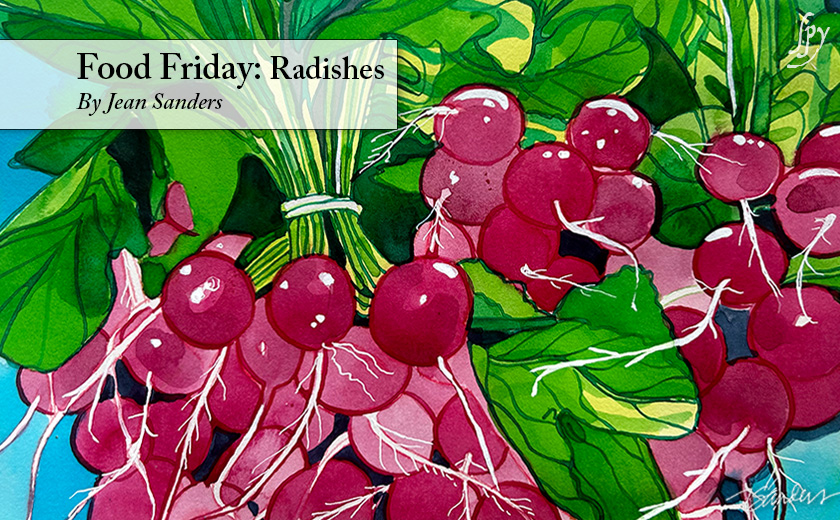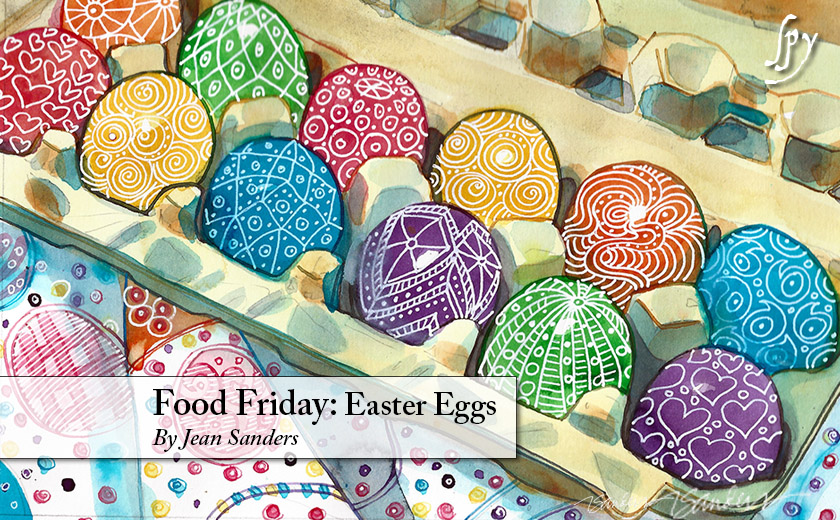
Food Friday is on the road this weekend, so you Gentle Readers will have to put up with a re-run of my favorite Easter lemon cheesecake. Mr. Sanders and I are heading to a family Easter gathering in Florida, and Luke the wonder dog is off for a much deserved vacay of his own with his dog pals at the spa. Please indulge me and enjoy our making our favorite Easter dessert. Play nicely at your Easter egg hunts, and let the little ones find the eggs. You can sip on a Bloody Mary or two.
At Easter I like to haul out my dear friend’s lemon cheesecake recipe, and reminisce, ruefully, about the year I decorated one using nasturtiums plucked fresh from the nascent garden, which unfortunately sheltered a couple of frisky spiders. Easter was late that year and tensions were already high at the table, because a guest had taken it upon herself to bring her version of dessert – a 1950s (or perhaps it was a British World War II lesson in ersatz ingredients recipe) involving saltines, sugar-free lime Jell-O, and a tub of Lite Cool Whip. The children were divided on which was more terrifying: ingesting spiders, or many petro chemicals?
I am also loath to remember the year we hosted an Easter egg hunt, and it was so hot that the chocolate bunnies melted, the many children squabbled, and the adults couldn’t drink enough Bloody Marys. The celery and asparagus were limp, the ham was hot, and the sugar in all those Peeps brought out the criminal potential in even the most decorous of little girls. There was no Miss Manners solution to that pickle.
Since our children did not like hard-boiled eggs, I am happy to say that we were never a family that hid real eggs for them to discover. Because then we would have been the family whose dog discovered real nuclear waste hidden behind a bookcase or deep down in the sofa a few weeks later. We mostly stuck to jelly beans and the odd Sacajawea gold dollar in our plastic Easter eggs. It was a truly a treat when I stepped on a pink plastic egg shell in the front garden one year when I was hanging Christmas lights on the bushes. There weren’t any jelly beans left, thank goodness, but there was a nice sugar-crusty gold dollar nestled inside it. Good things come to those who wait.
We won’t be hiding any eggs (real or man-made) this year. Instead we will have a nice decorous finger food brunch, with ham biscuits, asparagus, celery, carrots, tiny pea pods, Prosecco (of course) and a couple of slices of lemon cheesecake, sans the spiders, sans the lime Jell-O and Cool Whip. And we will feel sadly bereft because there will be no jelly beans, no melting chocolate and no childish fisticuffs.
Chris’s Cheesecake Deluxe
Serves 12
Crust:
1 cup sifted flour
1/4 cup sugar
1 teaspoon grated lemon rind
1/2 cup (1 stick) unsalted butter
1 egg yolk
1/4 teaspoon vanilla
Filling:
2 1/2 pounds cream cheese
1/4 teaspoon vanilla
1 teaspoon grated lemon rind
1 3/4 cups sugar
3 tablespoons flour
1/4 teaspoon salt
5 eggs
2 egg yolks
1/4 cup heavy cream
Preheat oven to 400°F
Crust: combine flour, sugar and lemon rind. Cut in butter until crumbly. Add yolk and vanilla. Mix. Pat 1/3 of the dough over the bottom of a 9″ spring form pan, with the sides removed. Bake for 6 minutes or until golden. Cool. Butter the sides of the pan and attach to the bottom.
Pat remaining dough around the sides to 2″ high. Increase the oven temp to 475°F. Beat the cream cheese until it is fluffy. Add vanilla and lemon rind. Combine the sugar, flour and salt. Gradually blend into the cream cheese. Beat in eggs and yolks, one at a time, and then the cream. Beat well. Pour into the pan. Bake 8-10 minutes.
Reduce oven heat to 200° F. Bake for 1 1/2 hours or until set. Turn off the heat. Allow the cake to remain in the oven with the door ajar for 30 minutes. Cool the cake on a rack, and then pop into the fridge to chill. This is the best Easter dessert ever. This recipe makes a HUGE cheesecake! You will be eating it for a week. At least.
“Probably one of the most private things in the world is an egg before it is broken.”
― M.F.K. Fisher
Jean Dixon Sanders has been a painter and graphic designer for the past thirty years. A graduate of Washington College, where she majored in fine art, Jean started her work in design with the Literary House lecture program. The illustrations she contributes to the Spies are done with watercolor, colored pencil and ink.
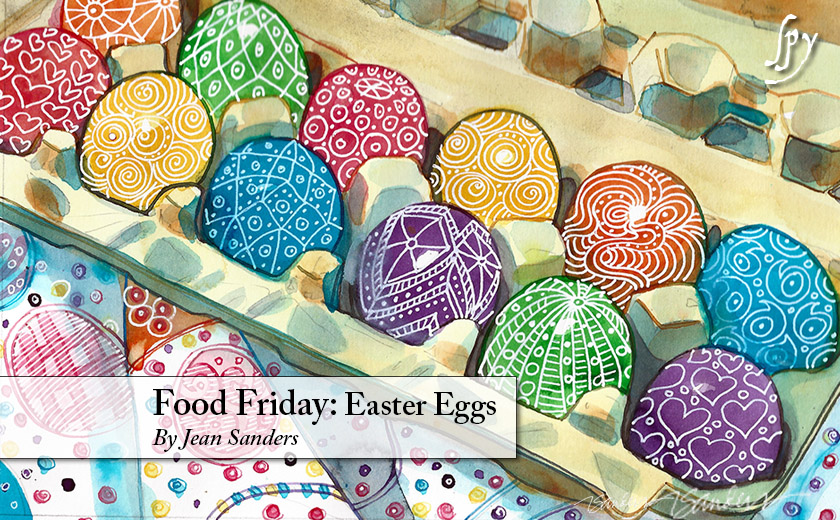


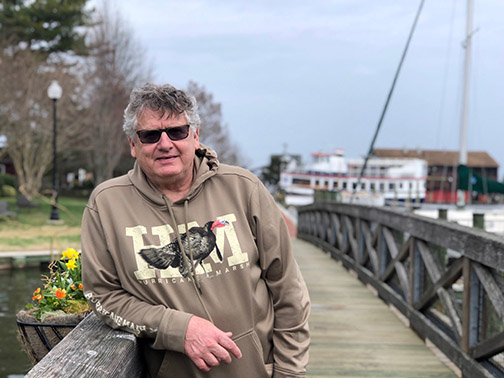
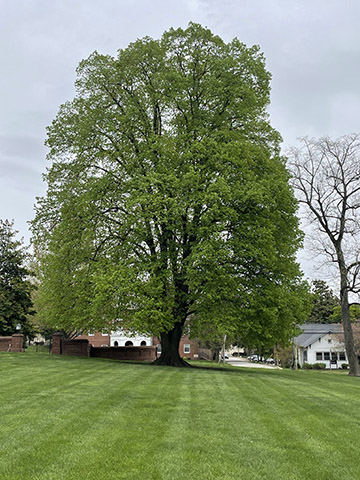

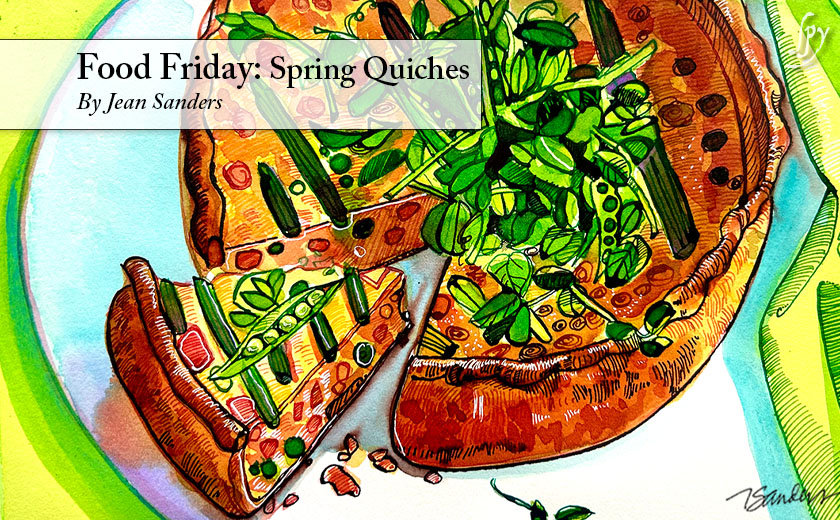
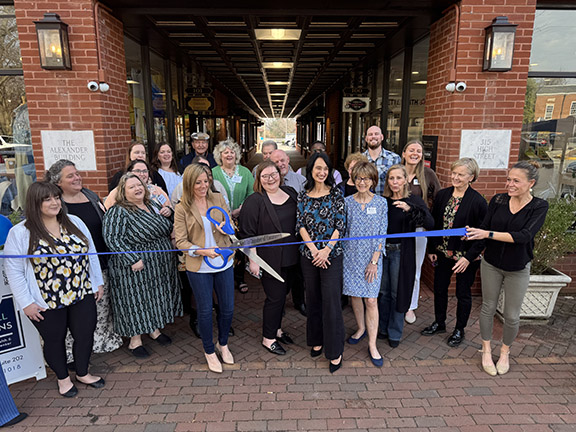
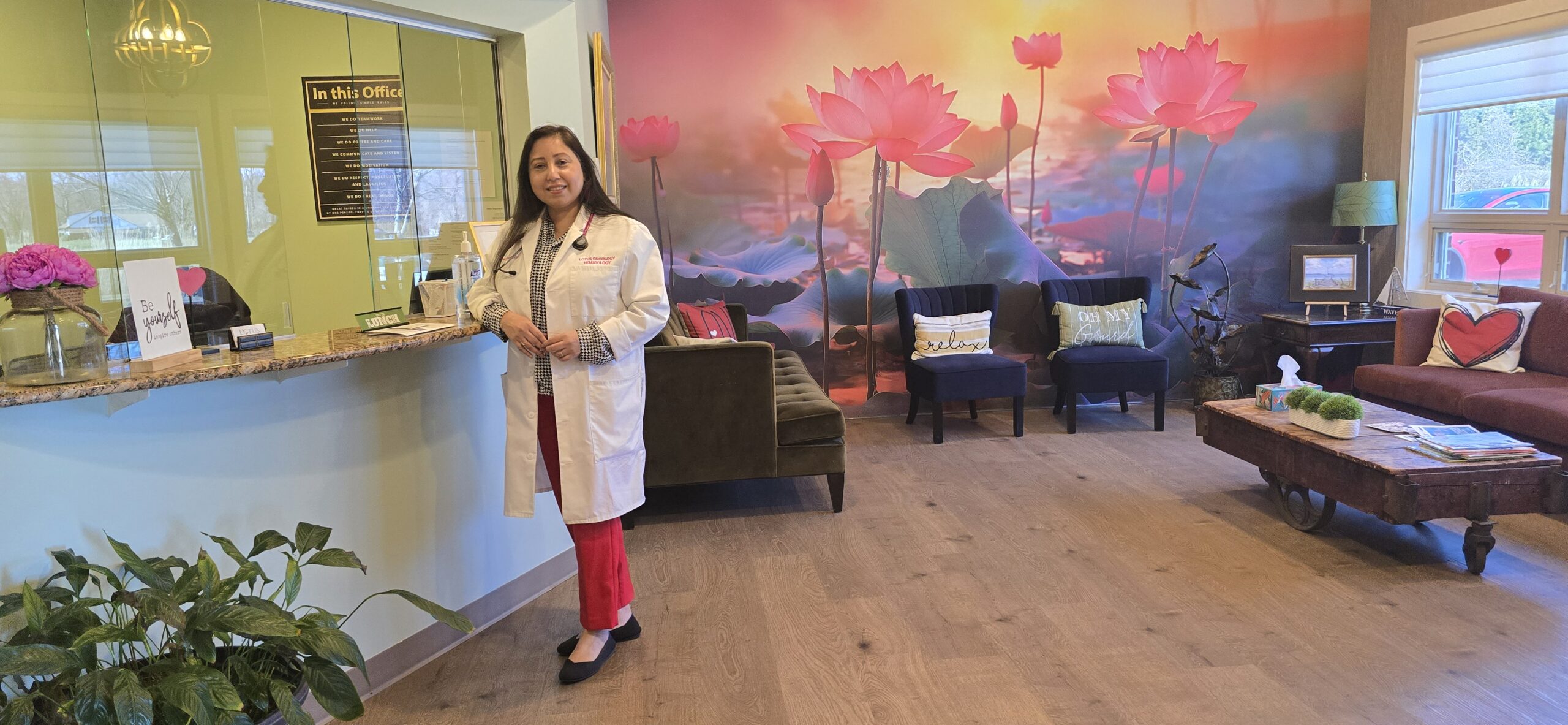
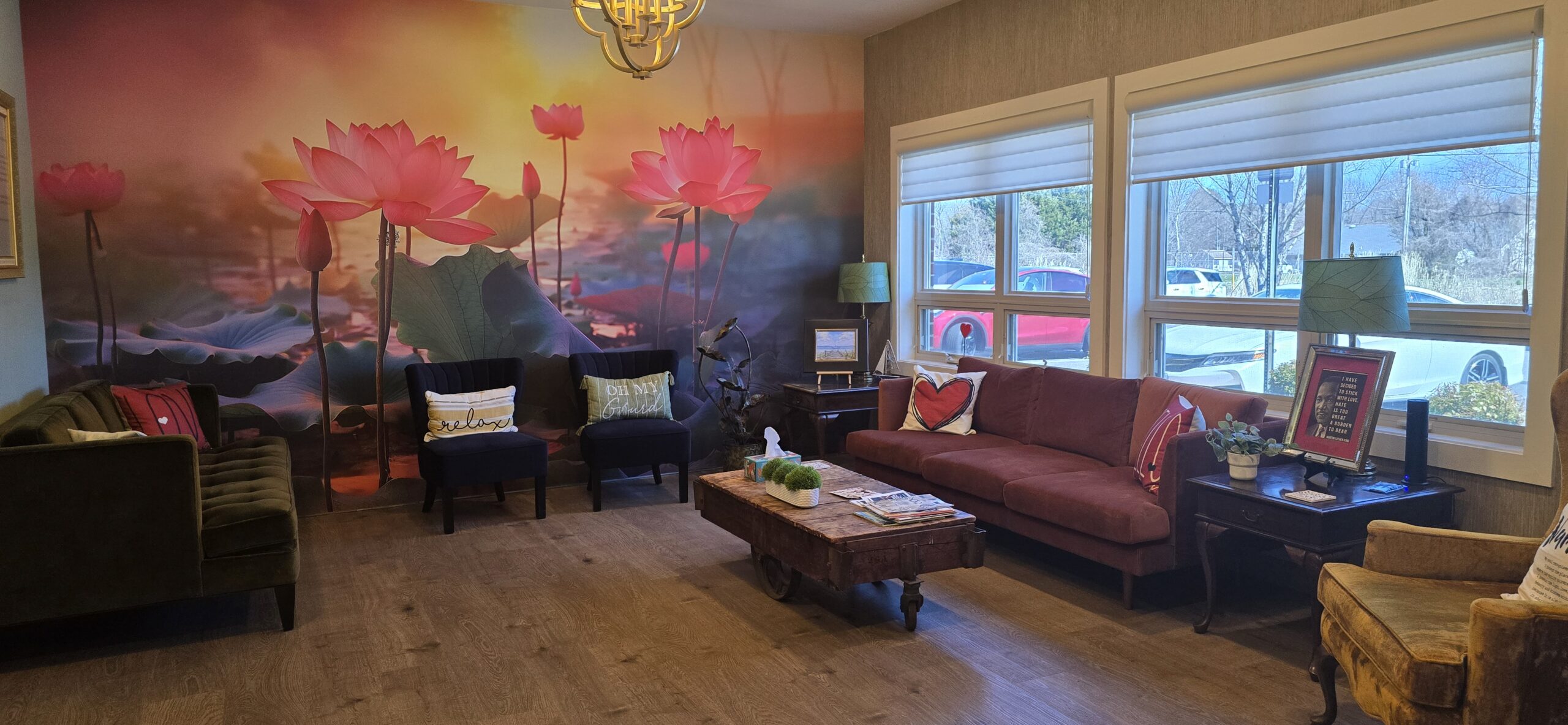 She also brings in integrative therapies backed by research: Acupuncture, yoga, reiki, nutrition support, massage therapy, and reflexology. “Wellness Wednesdays” offers breathwork, sound therapy, and art therapy, with plans to add music, mental health support, and even pet therapy. “We’re working with people in the community to bring this all together,” Dr. Gupta says. “It’s not extra. It’s essential.”
She also brings in integrative therapies backed by research: Acupuncture, yoga, reiki, nutrition support, massage therapy, and reflexology. “Wellness Wednesdays” offers breathwork, sound therapy, and art therapy, with plans to add music, mental health support, and even pet therapy. “We’re working with people in the community to bring this all together,” Dr. Gupta says. “It’s not extra. It’s essential.”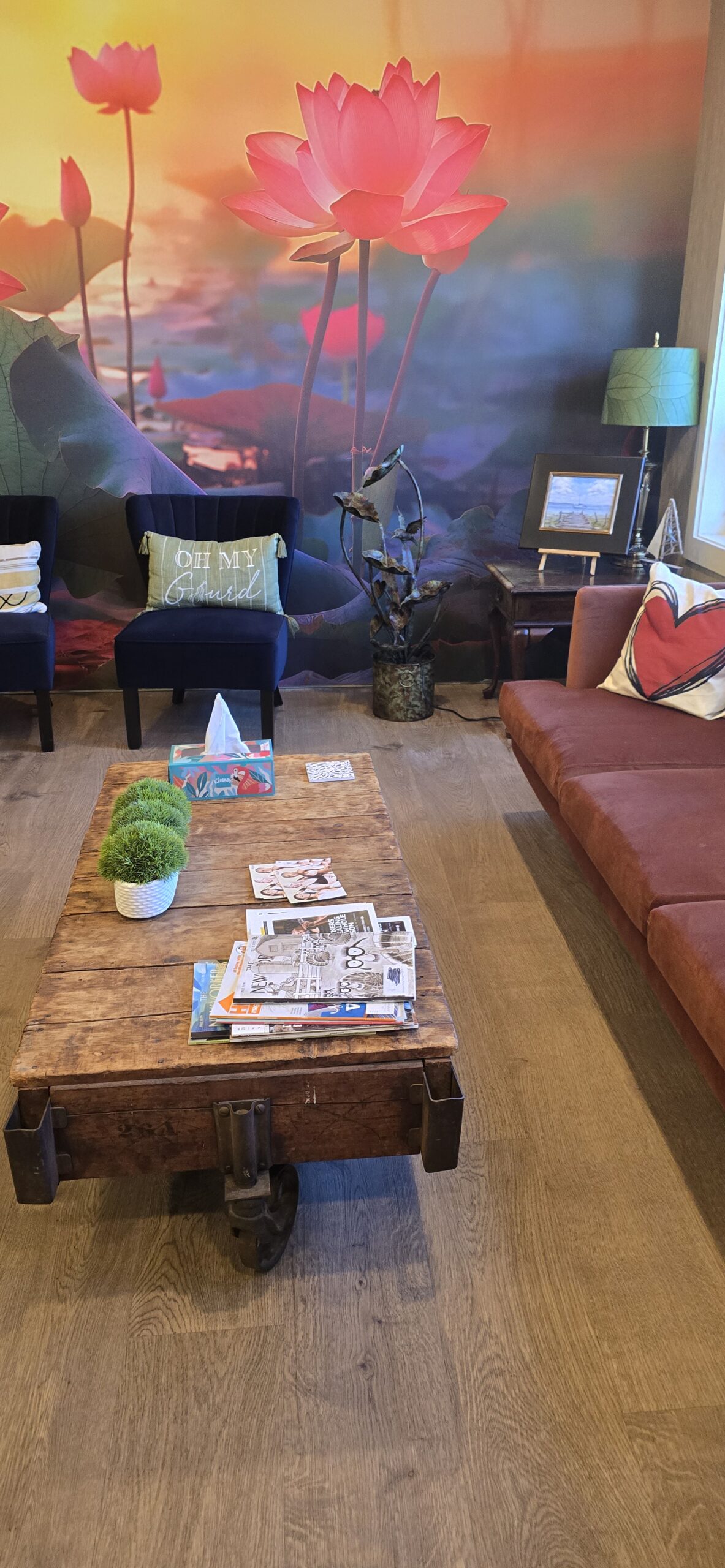 Moments of joy—like a husband reclining in a surprise lounge chair during his wife’s infusion or a patient ringing the treatment bell after realizing the whole team, including Dr. Gupta, came out to witness it—are small, but they matter.
Moments of joy—like a husband reclining in a surprise lounge chair during his wife’s infusion or a patient ringing the treatment bell after realizing the whole team, including Dr. Gupta, came out to witness it—are small, but they matter.